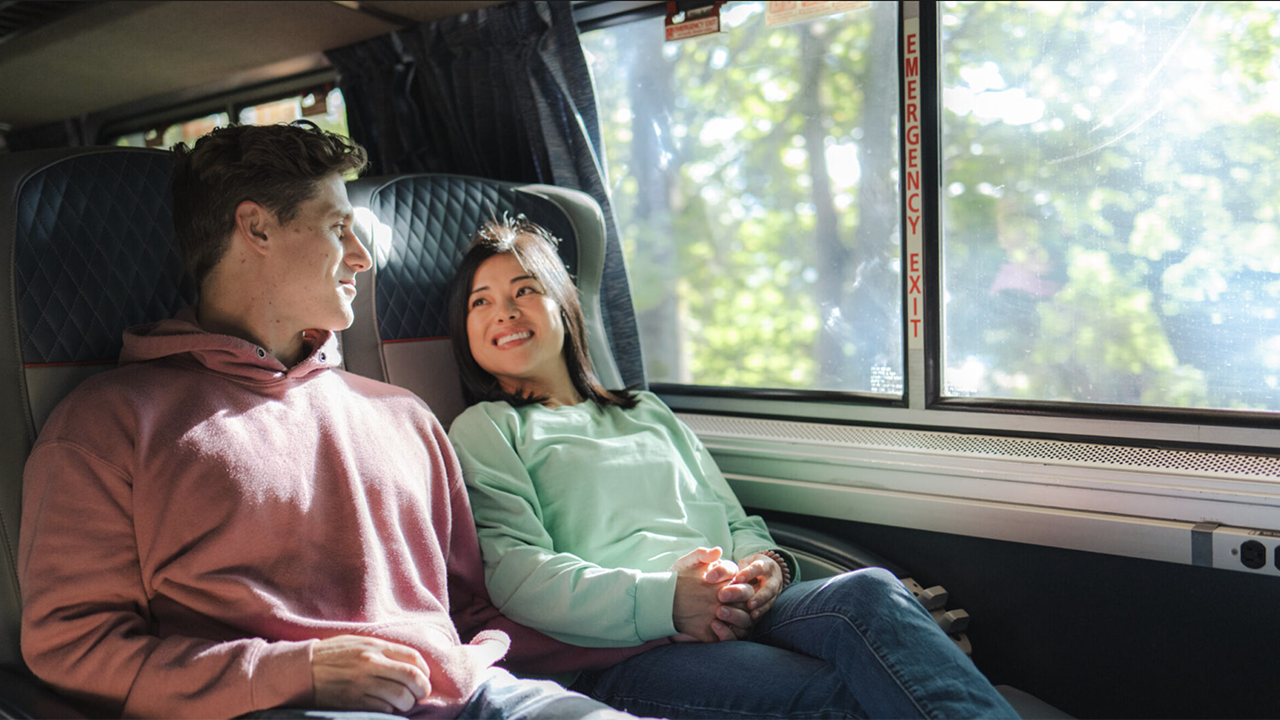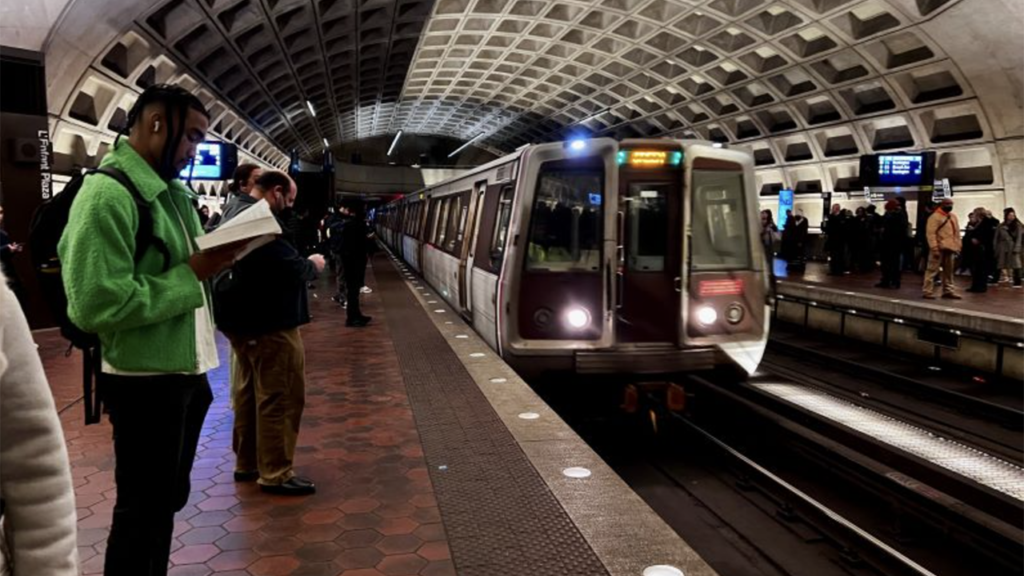
Transit Briefs: Amtrak, VPRA, WMATA
Written by Marybeth Luczak, Executive Editor
“Amtrak is working on two overarching objectives in 2024—improving passenger train service for our customers efficiently and effectively and carrying out a massive major infrastructure capital program aimed to modernize and upgrade our infrastructure, stations, fleet and technology,” Amtrak President Roger Harris said on Jan. 31. “As both a passenger rail service provider and a major construction company, we are quickly growing and evolving to deliver on both.”
Amtrak will advance several initiatives this year as part of its goal to double annual ridership to 66 million by Fiscal Year 2040. Also, Virginia Passenger Rail Authority (VPRA) details three proposed Christiansburg-area station alternatives, as part of the Amtrak New River Valley Project; and the Washington Metropolitan Area Transit Authority (WMATA) Office of Inspector General introduces a Whistleblower Award Program.
Amtrak
Amtrak on Jan. 31 reported that it aims to double ridership by 2040 by attracting new riders, serving new communities and “transforming” passenger rail.
Among “America’s Railroad’s” initiatives to propel ridership growth in 2024:
- Investing roughly $5.5 billion to modernize trains; improve stations, tunnels and bridges; and upgrade critical infrastructure. This includes the Frederick Douglass Tunnel Program and East River Tunnel Rehab Project.
- Continuing construction for major Northeast Corridor projects, including the Portal North Bridge and Hudson Tunnel Projects, and advancing Sawtooth Bridges Replacement and Dock Bridge Rehab projects—all in coordination with the Gateway Development Commission and partners in New York and New Jersey
- Advancing mega-projects including the Chicago Hub Improvement Program, New York Penn Station Expansion and Washington Union Station Redevelopment. Amtrak said it is also supporting partners to improve future service, including Penn Station Access in New York, the Long Bridge Project in Virginia, and Compass Rail in Massachusetts.
- Advancing initial New Acela service; achieving key milestones for Amtrak Airo where the first trainset will be nearly fully built by the end of 2024 and prepared for testing; and selecting proposals to begin replacing Amtrak’s Long Distance fleet.
- Furthering Amtrak’s lead in low-carbon emissions and taking steps toward Net-Zero; progressing its National Network Climate Vulnerability Assessment and Resilience Strategic Plan, engaging suppliers on carbon reduction goals, and advancing toward the railroad’s target of 100% electric vehicle fleet by 2035.
- Continuing to mature Amtrak’s Safety Management System “with a focus on driving performance, establishing an engaged and accountable culture, and improving resilience.”
- “Providing great service—and more of it” by working with states to develop new and expanded service through the Federal Railroad Administration’s Corridor ID Program. This includes twice-daily service between New Orleans and Mobile and extending the Hiawatha from Milwaukee to St. Paul.
- Continuing to implement a “customer-centric” pricing structure nationwide in collaboration with states to drive revenue and ridership growth.
- Increasing Food and Beverage service with more offerings, including a “significant makeover” to the Acela Cafe menu.
- “Making big investments” in talent and training for frontline teams, with an emphasis on customer service.
- Continuing to advance accessibility to improve services, communications, equipment, and experiences for customers with disabilities, while making stations accessible through Amtrak’s Americans with Disabilities Act (ADA) Stations Programs.
- Hiring more than 3,500 new employees to rebuild existing infrastructure and meet the growing demand for passenger rail.
- Implementing a “Connected Workforce” that Amtrak said will transform team collaboration, improve digital engagement, and enable better decision-making leveraging real-time data. This includes upgrading the HR Information System that offers employees self-service tools, data analytics, and dashboards, and expands mobile devices and apps used by Amtrak staff.
- Advancing Amtrak’s “Diversity, Inclusion and Belonging” strategy, while expanding “Total Rewards Offerings” to help retain and recruit talent.
“Amtrak is working on two overarching objectives in 2024—improving passenger train service for our customers efficiently and effectively and carrying out a massive major infrastructure capital program aimed to modernize and upgrade our infrastructure, stations, fleet and technology,” Amtrak President Roger Harris said. “As both a passenger rail service provider and a major construction company, we are quickly growing and evolving to deliver on both.”
“Amtrak has rebounded from the pandemic and is growing again as part of our plan to double ridership by 2040,” Amtrak CEO Stephen Gardner said. “With funding from the infrastructure bill in hand, we and our partners are transforming intercity passenger rail across the country in a big way.”
VPRA
VPRA earlier this month provided Virginia residents with an update on three proposed alternatives for a train platform and layover facilities in the Christiansburg area, as part of the planned Amtrak New River Valley service, extending from Roanoke, the Cardinal News reported Jan. 30. (View presentation above.)
According to the news site serving southwest and southside Virginia, “if one of the plans goes ahead, Amtrak service could begin in the region as soon as 2028.” The New River Valley region last saw rail service in 1979.
The news site reported that talks to bring back service “picked up steam recently when more state and local funding was committed to the project, including placeholder funding in Governor Glenn Youngkin’s proposed budget for this year.” The price tag for the three proposed Christiansburg-area options ranges from a estimated $366 million to $951 million, depending on location and track improvements, it said.
“The vast differences in cost center around the Merrimac Tunnel on the old Virginian Railway line that passes along the north side of Christiansburg,” Cardinal News reported. The tunnel, which is one-mile long and more than 120 years old, is “not up to safety standards,” according to the news outlet. “One proposal—the cheaper option at an estimated $366 million—would locate the station and passenger platform and all Amtrak facilities east of the tunnel off Cinnabar Road.” The second proposal, slated to cost $951 million, includes facilities west of the tunnel, near the New River Valley Mall; and the third, slated to cost $785 million, would include a platform near the mall, with layover facilities at Cinnabar Road, Cardinal News reported.
“The rising cost of the New River Valley project, driven primarily by the cost of renovating the Merrimac Tunnel, has raised concerns among some state legislators that the proposed extension to Bristol might be in jeopardy,” reported the Cardinal News, which noted that VPRA Board Member Beth Rhinehart has urged the Authority “not to adopt any station site in the New River Valley that would preclude an extension further west.”
In June, VPRA will vote on which proposal to adopt.
According to the Cardinal News, all options use “the V-line route rather than the main Norfolk Southern line that plays host to the majority of freight between the two valleys.” VPRA and NS closed on a deal in 2022 in which the commonwealth of Virginia would purchase 28 miles of V-line track.
The news outlet reported that initial studies by the New River Valley Regional Commission estimate 40,000 riders per year on Amtrak out of the New River Valley.
WMATA

The WMATA Office of Inspector General (OIG) on Feb. 1 will launch its Whistleblower Award Program.
Individuals who provide information that results in either a recovery by WMATA of at least $250,000 or a cost savings of at least $1,000,000 through an audit or evaluation will be eligible for an award of up to $10,000, according to WMATA. Information can be provided anonymously.
“Early detection of fraud by those who work for or contract with WMATA is critical to the protection of WMATA’s assets and taxpayer dollars,” Acting Inspector General Kevin B. Muhlendorf said. “The goal of this program is to encourage and reward the provision of better and more timely tips by WMATA employees and contractor employees, as well as to bolster internal compliance programs by WMATA contractors. The OIG encourages anyone with information about waste or fraud related to WMATA contracts to contact the WMATA OIG.”
The WMATA OIG is also conducting an evaluation of WMATA contractors’ mandatory disclosures and ethics and compliance programs, according to WMATA.
“A contractor’s failure to make required disclosures to WMATA and the WMATA OIG calls into question a contractor’s present responsibility and can result in a referral to the WMATA Suspension and Debarment program,” Muhlendorf said. “All WMATA contractors should be reviewing their compliance programs to ensure they are adequately evaluating and making required disclosures.”



